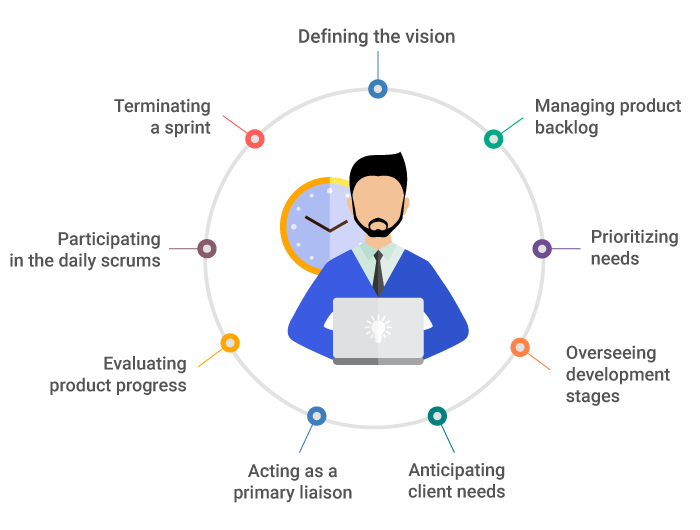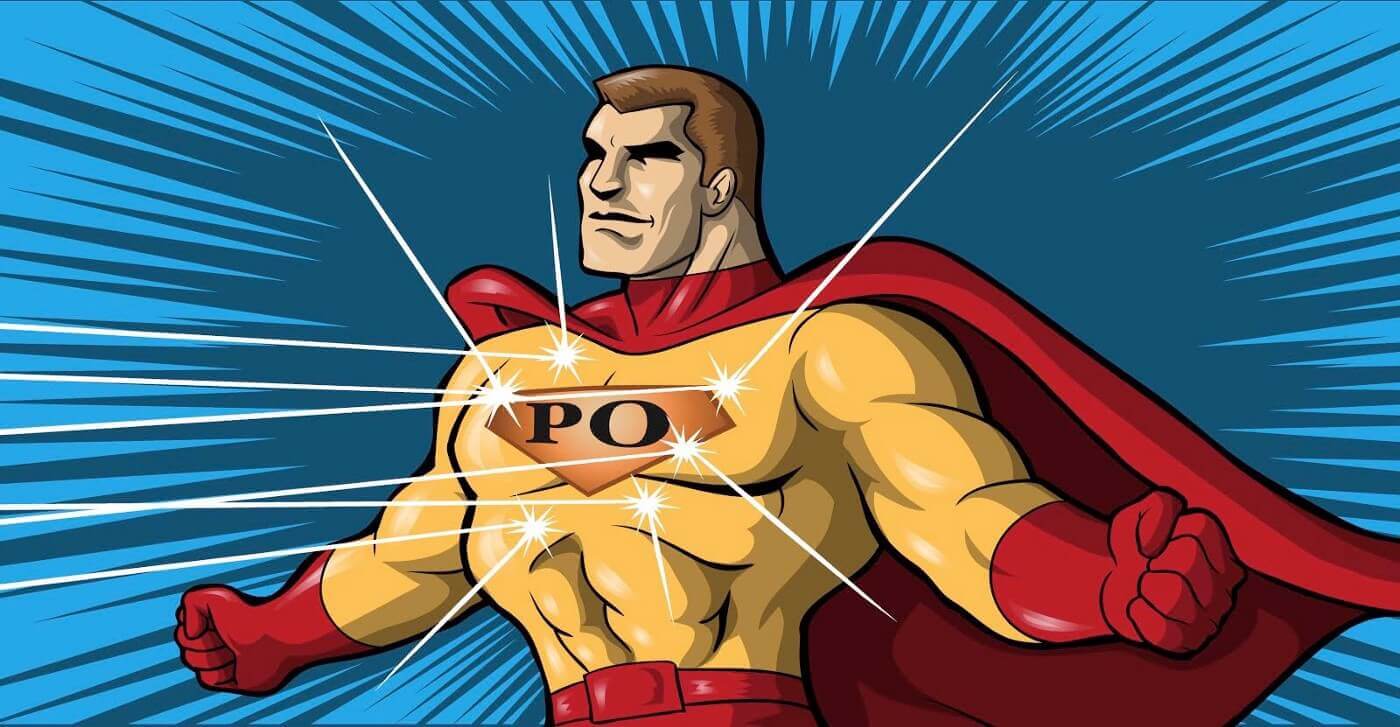A brilliant vision can make all the difference in the success of a business or company, insofar as the idea actually comes to life. This is where product owners take a leading and determining role. Product owners have a challenging yet crucial task to accomplish; they must envision a feasible project idea, relay an attainable and clear picture of that project, create the framework for its execution, and delegate tasks to a team such that the project can be accomplished.
What is the Product Owner Role?
In Agile project development, many different methodologies can be used to approach software or non-software products. One such methodology is the Scrum framework, allowing for simple development, delivery, and management of advanced or complex projects. In this framework, the environment, containing powerful tools and roles for team members, allows for easy collaboration. These roles are the product owner, a scrum master, and the development team members.

The product owner role is the leader of the project and the team; accordingly, they are responsible for overseeing the project and assuming responsibility for the outcome of the project. Ideally, the owner displays the following qualities or skills:
- Expertise: A product owner has a substantial knowledge of the topic at hand, whether that is a software or non-software product. Although they should have a solid grasp of their own responsibilities, they may only have a light understanding of the different sectors necessary to complete the project (for instance, they should be experienced in project management but they may only have a superficial knowledge of marketing).
- Resourceful: If the owner has little knowledge of other departments or sectors that will contribute to the product creation or satisfied customer, leaders need to be able to reach out to appropriate resources to fill gaps in understanding.
- Adaptive: While owners will create a product backlog complete with arranged and prioritized user tasks, they will need to review and reflect on a continuous and constant basis. In this way, they should adapt to feedback and make changes as necessary throughout the duration of the project.
- Collaborative: Although the purpose of story mapping is to bring people, teams, and organizations together in a communicative and collaborative way, product owners need to employ these skills into their leadership role as well. Listening to feedback from the development team members, and adapting the project in an appropriate way, will be crucial to success.
- Dedication: Leaders must be able to provide consistent attention to the project. It is not as simple as providing a project vision, motivating a team, and then waiting for the product to be finished and delivered. Since story mapping is about efficiency, product owners can check in with completed tasks and team members to ensure everything is going smoothly.
Tools all Product Owners need
Try Agile user story map and Roadmap
How to be an Effective Product Owner?
An effective product owner takes their roles and responsibilities seriously, as the leadership and direction will decide the course of the project and the final product. In Agile project development, it is a good idea to invest time and energy into the following key segments:
- Define the Vision
One of the key determining factors in the success of a product is a solid foundation. It is the product owner’s responsibility to set up this foundation, by providing a clear vision for the team and strategizing an effective plan of execution. With story mapping, owners have the unique opportunity to start from the user experience rather than the product archetype. In this way, stakeholders will be able to identify how the product will cater to target personas and which areas need to be improved upon in order to accomplish that. Accordingly, with collaboration from the team, project leaders will be able to define what the development team is striving towards and exactly how they can make that happen.
- Manage Product Backlog
If the product owner has a substantial vision for their project, they can create a product backlog, or a prioritized list of tasks or important features to move the project along. The majority of backlog concepts will be made into user stories; particularly large backlog items can be broken down into more accessible tasks. After this has been completed, they can be prioritized according to strategic development, value, time, or other aspects that the team finds important.
- Trust Team Members
Although the product owner can prioritize backlog items, the leader must understand this is a collaborative approach. Team members will be able to select the amount of work they can carry out during a sprint, or the period of time where the team will carry out a task. The owner does not have control over how many sprints or how much work is involved in one sprint. Once a sprint has started, they will also not be able to change the requirements for that product backlog task. As such, the product owner will need to trust their team to a certain degree to carry out their work in a manner that will complete the project properly. They will also need to ensure they have provided a clear mission and attainable objectives.
- Oversee Development Progress
Once a sprint has been completed, the product owner has the duty to review and communicate with the team in a timely manner. In this way, they can oversee if the project is running well or if changes need to be made. If the project is not progressing according to the vision, the project owner should evaluate if they are providing a comprehensible vision, clear features or objectives, or intelligible tasks. A strong owner may reevaluate how they created their story mapping, and if they need to re-design it.
In order to further assess the situation, the product owner and the team can hold a planning meeting before identifying and organizing further backlog items and story maps. All stakeholders should have an opportunity to weigh in on how the project is progressing, however the owner should utilize their judgment to discern which ideas are in line with project goals and business objectives.
Wrapping Up
As product owner plays a significant role in the development and management of a project, they ultimately control the successful creation and delivery of a product insofar as the outcome is their responsibility. An owner must possess the proper qualities and skills to manage their team effectively. While their development team will perform the tasks required to accomplish the project, the owner needs to be clear and organized in their approach to goals and objectives. They also need to be able to provide consistent attention to the completion of sprints and be able to adjust the project following their team’s performance. Agile User Story Map & Product Roadmap can make complicated projects easier for project owners and development teams with effective organization tools and clear visual representations.













